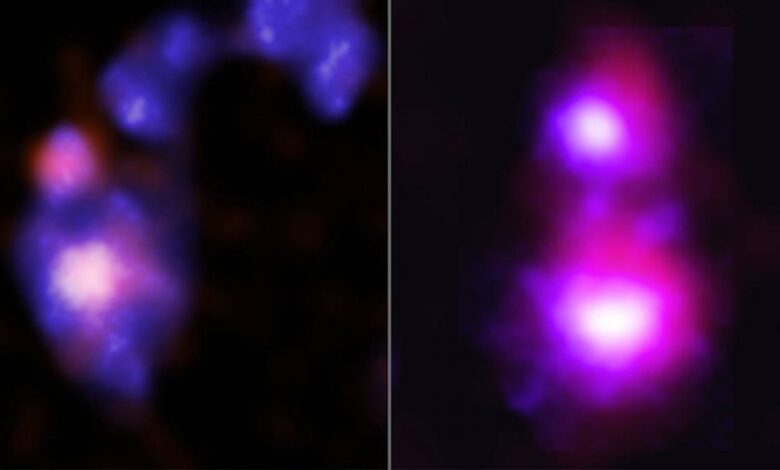The NASA Chandra Observatory Spots Supermassive Black Holes on a Collision Course

The NASA Chandra Observatory Spots Supermassive Black Holes on a Collision Course
NASA’s Chandra X-ray Observatory has the ability to detect exciting phenomena in the universe by searching for x-ray emissions in hot regions. In one of the latest studies, it discovered two supermassive black holes that are aiming to collide with one another. Since this is the first time we’re able to witness such an event, it will provide scientists with new details on how black holes grow.
These black holes are within dwarf galaxies. If you’re wondering, these galaxies are defined as having stars that don’t have more total mass than three billion suns. In common theories, it’s believed that these dwarf galaxies once combined to form larger ones. Sadly, we don’t have the technology available to find any of the original dwarf galaxies that formed near the beginning of the universe.
Two pairs of supermassive black holes in dwarf galaxies are on collision courses in a new study by @ChandraXray. Researchers suspect dwarf galaxies merge to create larger galaxies like our Milky Way & may give insight into our galaxy’s past: https://t.co/TVjluH5Koa pic.twitter.com/omYsDnyHiU
— NASA (@NASA) February 22, 2023
Now, the material that surrounds black holes can easily heat up to millions of degrees. It’s thanks to this phenomenon that x-rays are formed. With NASA’s Chandra observatory, scientists can hunt for sources of these x-rays to find black holes, specifically ones that may be heading on a collision course.
So far, it’s discovered two such examples.
If you look at the images at the top, the left one represents Abell 133, which is a galaxy cluster 760 million light-years away from us. The x-ray data that Chandra detected is shown in pink, while the blue contains optical information from the Canada-France-Hawaii Telescope (CFHT).
In this example, the collision and merger have already happened, as you can see from the resultant swinging tail at the top. The name given for these merged galaxies is Mirabilis, named after a hummingbird species with a similar long tail.
The right image represents Abell 1758S, another galaxy cluster 3.2 billion light-years away. CFHT and Chandra were put to good use again with the same visual qualities. Scientists gave the two merging galaxies new names, Vinteuil and Elstir. These are in the early stages of merging, which is an exciting occasion in some ways.
The scientists believe studying this phenomenon will help explain how the Milky Way was formed. Common belief among them is that there were primarily dwarf galaxies at the start of the universe, while many merged sometime later.
By studying what happens when these supermassive blackholes merge, we’ll have a better understanding of what occurs after they collide.
Thank you for being a Ghacks reader. The post The NASA Chandra Observatory Spots Supermassive Black Holes on a Collision Course appeared first on gHacks Technology News.
gHacks Technology News
